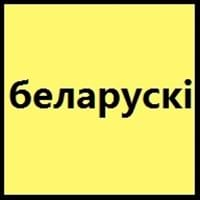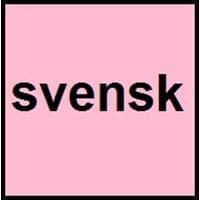Belarusian vs Swedish
Countries
Belarus, Poland
European Union, Finland, Nordic Council, Sweden
National Language
Belarus, Gambia
Sweden
Second Language
Poland
Finland
Speaking Continents
Asia
Antartica, Europe
Minority Language
Czech Republic, Lithuania, Ukraine
Australia, Belgium, Canada, France, Germany, Netherlands, Spain, Switzerland, United Kingdom, United States of America
Regulated By
National Academy of Sciences of Belarus, National Languages Committee
Institute for the Languages of Finland, Swedish Academy, Swedish Language Council
Interesting Facts
- Since 1918, Belarusian has been the official language of Belarus.
- Belarusian include many loanwords from Polish language.
- In Swedish language, article comes after noun.
- Most of the words in Swedish language began "S" than any other letter.
Similar To
Russian and Ukrainian
Norwegian and Danish Language
Derived From
Not Available
Old Norse Language
Alphabets in
Belarusian-Alphabets.jpg#200
Swedish-Aphabets.jpg#200
Writing Direction
Not Available
Left-To-Right, Horizontal
Language Levels
Not Available
Time Taken to Learn
Not Available
Thank You
Dziakuj
tacka dig
How Are You?
Jak vy ?
hur mår du
Good Night
Dabranač
godnatt
Good Evening
Dobry viečar
god kväll
Good Afternoon
dobry dzień
god eftermiddag
Good Morning
Dobraj ranicy
god morgon
Please
Kali laska
vänligen
I Love You
JA liubliu ciabie
jag älskar dig
Excuse Me
Vybačajcie
ursäkta mig
Dialect 1
North-Eastern Belarusian
Dialects
Where They Speak
North-East Belarus
Gabon
How Many People Speak
Not Available
Dialect 2
South-Western Belarusian
Dialects
Where They Speak
South-West Belarus
Georgia
How Many People Speak
Not Available
Dialect 3
Middle Belarusian
Dialects
Where They Speak
Middle Belarus
France
How Many People Speak
Not Available
Native Name
Беларуская мова (Bielaruskaja mova)
Svenska
Alternative Names
Belarusan, Belorussian, Bielorussian, Byelorussian, White Russian, White Ruthenian
Ruotsi, Svenska
French Name
biélorusse
suédois
German Name
Weißrussisch
Schwedisch
Pronunciation
Not Available
[ˈsvɛ̂nskâ]
Ethnicity
Belarusians
Swedes, Finland Swedes
Origin
18th century
13th Century
Language Family
Indo-European Family
Indo-European Family
Branch
Eastern
Northern (Scandinavian)
Early Forms
Old East Slavic
Old Swedish
Standard Forms
Belarusian
Standard Swedish
Signed Forms
Not Available
Tecknad svenska, ("Signed Swedish")
Scope
Individual
Individual
ISO 639 6
Not Available
Not Available
Glottocode
bela1254
swed1254
Linguasphere
53-AAA-eb < 53-AAA-e (varieties: 53-AAA-eba to 53-AAA-ebg)
52-AAA-ck to -cw
Language Type
Living
Living
Language Linguistic Typology
Not Available
Subject-Verb-Object
Language Morphological Typology
Not Available
Not Available
Belarusian and Swedish Language History
Comparison of Belarusian vs Swedish language history gives us differences between origin of Belarusian and Swedish language. History of Belarusian language states that this language originated in 18th century whereas history of Swedish language states that this language originated in 13th Century. Family of the language also forms a part of history of that language. More on language families of these languages can be found out on Belarusian and Swedish Language History.
Belarusian and Swedish Greetings
People around the world use different languages to interact with each other. Even if we cannot communicate fluently in any language, it will always be beneficial to know about some of the common greetings or phrases from that language. This is where Belarusian and Swedish greetings helps you to understand basic phrases in Belarusian and Swedish language. Belarusian word for "Hello" is dobry dzień or Swedish word for "Thank You" is tacka dig. Find more of such common Belarusian Greetings and Swedish Greetings. These greetings will help you to be more confident when conversing with natives that speak these languages.
Belarusian vs Swedish Difficulty
The Belarusian vs Swedish difficulty level basically depends on the number of Belarusian Alphabets and Swedish Alphabets. Also the number of vowels and consonants in the language plays an important role in deciding the difficulty level of that language. The important points to be considered when we compare Belarusian and Swedish are the origin, speaking countries, language family, different greetings, speaking population of these languages. Want to know in Belarusian and Swedish, which language is harder to learn? Time required to learn Belarusian is Not Available while to learn Swedish time required is 24 weeks.





